Top Ten Asymmetric Aircraft
 Despite in many cases possessing design advantages, very few profoundly asymmetric aircraft have been constructed. There is no obvious reason for this but it may just be that they are not trusted. For example, the proposed initial design of the Boeing 727 trijet featured a layout that Boeing calculated would be the most efficient with two engines under one wing and one under the other but was rejected by airlines as it was believed passengers wouldn’t like it.
Despite in many cases possessing design advantages, very few profoundly asymmetric aircraft have been constructed. There is no obvious reason for this but it may just be that they are not trusted. For example, the proposed initial design of the Boeing 727 trijet featured a layout that Boeing calculated would be the most efficient with two engines under one wing and one under the other but was rejected by airlines as it was believed passengers wouldn’t like it.
Exceptions prove the rule though, so here’s a rundown of ten flying machines that not only existed but actually flew and for one reason or another managed to slip the surly bonds of symmetry.
This ridiculously niche site can only survive through the generosity of its readers. Our site is absolutely free and we have no advertisements (any you do see, are from WordPress). If you’ve enjoyed an article you can donate here.
10. Canopy capers: Lockheed RP-38

Provided an aircraft is of sufficient size it can sometimes makes sense to move the pilot to one side or the other to allow other crew to get past or to improve the view from the pilot’s seat. The Sea Vixen and some variants of the Canberra offset the canopy, allowing the pilot a lovely view whilst simultaneously confining other crewmembers in the depths of the fuselage with merely a tiny window to peer out of. In the case of the Sea Vixen this was allegedly done to cut out extraneous daylight and render the cabin dim enough for the feeble brightness of the radar scope to be visible, whilst the Canberra’s asymmetrical hood derives from the navigator’s position being moved but the pilot’s remaining the same: “He’ll be fine there. Just cover him with a smaller canopy” said Teddy Petter (probably). Some ten years earlier the Yermolaev Yer-2 (which remains obscure despite enjoying a long service life and intensive wartime action) shifted the pilot to the left under an offset canopy to improve downward view over the nose, meanwhile most variants of the rather better-known Heinkel He 111 employed a wonky nose to allow the pilot to see past the front gun cupola. The most extreme example of canopy relocation however remains the RP-38: in order to test whether a pilot’s position some distance from the centre line of the aircraft would prove problematic, the first production P-38 Lightning was modified by removing the turbosupercharger and replacing it with a cockpit in the left hand tailboom. The results were successful and this research paved the way for the P-82 Twin-Mustang with crew members in each of its twin fuselages, as well as producing the most distinctive Lightning variant to fly.

Left to right: the Sea Vixen, Canberra, Yer-2 and He 111 show off their respective glazing irregularities
9. Offset testbeds: Tu-4/Tu-91

«Быстро, спрячься! Вот идет Хрущев»
A common reason for many normally-symmetrical aircraft to become asymmetrical is to take a new and untried engine into the air and the results in some cases are striking. Honeywell for example use a Boeing 757 for this purpose but have decided to stick the test engine on a pylon bolted just behind the cockpit, resulting in an aircraft that looks like an example of bad Photoshop bizarrely come to life to menace ‘normal’ airliners. Meanwhile NASA’s propfan test Gulfstream II remains one of the wackiest example in this crowded field. Not content with using an aircraft that would appear to the casual observer to be too small for such activity, NASA decided to mount the 6000hp Allison propfan on the port wing only and counterbalance it with a large weight on the tip of the starboard wingtip. But it was the Soviets who really went to town on this theme. When testing the Tu-91, apparently unaware of the existence of wind tunnels, Tupolev mounted the entire engine and fuselage assembly onto the starboard wing of a Tupolev Tu-4 to test its aerodynamics, resulting in a horrific Frankenstein’s monster of an aircraft. Ultimately the aerodynamics proved fine but the Tu-91 was apparently cancelled on the whim of Khruschev who thought it looked ridiculous. Evidently he never saw this testbed.

Left: Honeywell’s 757 does its best Steve Martin impression Right: NASA’s test Gulfstream shows off its single propfan and natty wingtip counterweight
8: Mario Castoldi’s OCD nightmare: Macchi MC.200 series
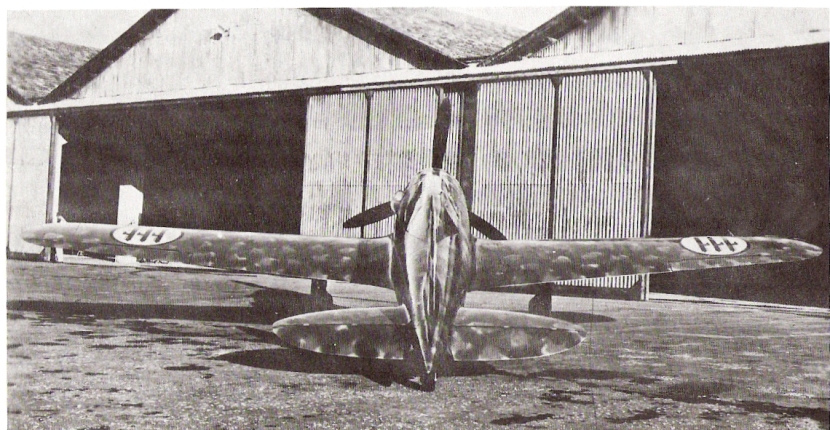
Most single engine high performance aircraft of the 1940s attempted to counteract torque by offsetting the vertical tail surfaces but there were exceptions, for example the French Bloch 152 employed the cunning but hideous expedient of cranking the entire engine and propellor slightly to the left resulting in a broken-nosed look. Meanwhile in Italy, Macchi’s outstanding designer Mario Castoldi schemed a more elegant solution designed to irritate OCD sufferers for years to come by making one wing of his series of wartime fighters slightly but noticeably longer than the other. This meant rather than simply counteracting the torque, the enlarged left wing put the asymmetric force created by the airscrew to useful work by generating lift. Evidently it was a fine solution as the Macchi fighters were prized for their beautifully harmonised controls and delightful handling characteristics.
7. Lop-sided choppers: Lockheed XH-51A
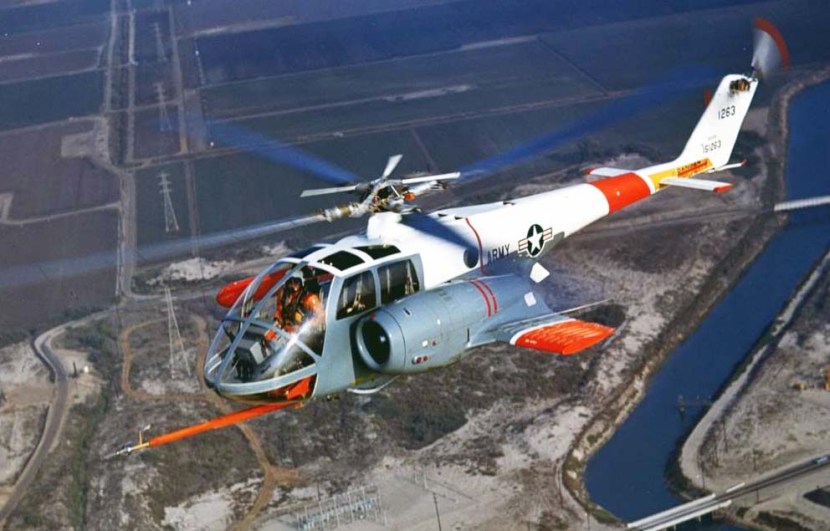
Most helicopters are fairly asymmetric, requiring a tail rotor to keep them from spinning out of control, but Lockheed took it to another level. The XH-51 was a fast helicopter but Lockheed wanted to go faster still and what better way to achieve this than by slamming a turbojet on the side to provide a shedload of extra thrust? The resulting XH-51A also added stub wings, turning it into compound helicopter. It was weird looking but very fast, clocking 257 mph in level flight.

Gyrodyne: cute but doomed
Curiously, around ten years earlier the only other asymmetrical compound helicopter to be built had gained the absolute speed record for rotorcraft when the Fairey FB.1 Gyrodyne attained 124 mph. It too had stub wings and mounted a small tractor propellor on the right hand wingtip. The Gyrodyne was on order for the Army when it achieved the record but sadly it was destroyed in a crash soon afterwards. Desperately requiring helicopters for operations in Malaya but now faced with an unacceptable delay to series production the Army ordered the Westland Dragonfly instead (a licence built Sikorsky S.51) thus depriving British forces of the chance to operate their most asymmetrical helicopter.
6. Mars Attacks: Scaled Composites ARES

“Just pull a cool fighter pilot face…ahh, whatever, that’s fine.”
The A-10 is a very mildly asymmetric aircraft, placing the (massive) gun slightly to one side to allow room for the nose wheel to retract into. It was also a big gun that resulted in the more pronounced asymmetry of the Scaled Composite ARES (Agile Responsive Effective Support), a close air support aircraft designed as a result of a study into a Low Cost Battlefield Attack Aircraft (LCBAA) – essentially a smaller cheaper A-10. A major problem with aircraft mounted guns arises if the engine ingests waste gases produced when the weapon is fired. To avoid this Burt Rutan sensibly mounted the gun on the right side of the aircraft and the engine intake is on the left. To avoid problems from asymmetric recoil of the gun the exhaust gases produced by firing it are channelled left by a duct to cancel this out. To compound the asymmetry of the aircraft, the engine is not mounted parallel to the direction of flight but canted eight degrees to the left, the jet pipe is curved to direct the thrust directly to the rear. The curved jet pipe also serves to reduce the IR signature of the aircraft. As seems to be the norm with ‘low cost’ combat aircraft with a massive potential international market, ARES proved thoroughly excellent in tests and then no one bought it. However all was not lost as ARES starred as the secret Me 263 in the screen (ahem) ‘classic’ of 1992 ‘Iron Eagle III’ and remains airworthy (and available for hire) with Scaled Composites at Mojave as a research aircraft.

5. Skew-whiff pioneer: Wright Flyers

The Wright Brothers were motivated by a desire to appear on page 3 of every history of aviation book after Icarus and the Montgolfier Brothers.
Aerial asymmetry is not a new development. The first powered aeroplane to fly was asymmetrical, mounting the engine on one side of the centre line and placing the pilot on the other to balance it, an arrangement that did not catch on. Despite the non-intuitive engine placement the Wright’s persisted with it as their aircraft evolved and entered production. Nearly a decade later, the Wright Model B, which had seats for two, placed the engine on one side and the occupants on the other, as may be seen in the accompanying photograph (below).
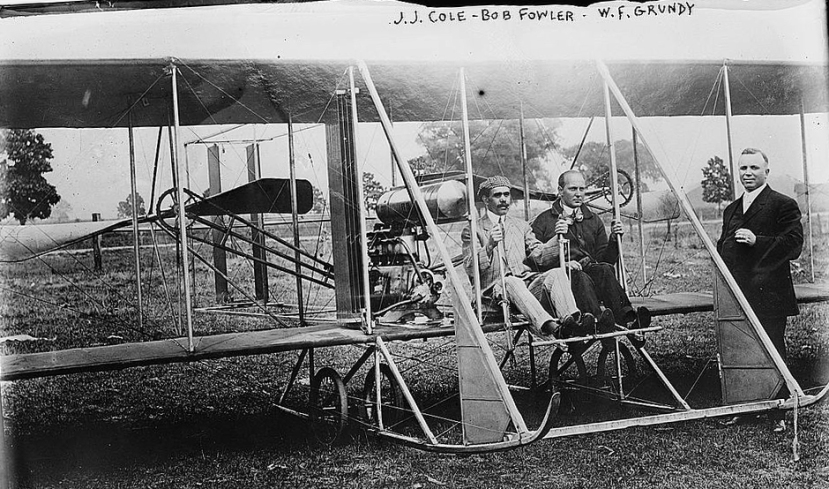
Cole, Fowler and Grundy’s difficult second album proved too much for contemporary critics
4. The Kaiser’s Withered Arm: Gotha Go.VI

Quite why the Germans were so very much more ready to embrace the notion of lateral asymmetry in aircraft remains a mystery but the fact remains they were at it way before anyone else was really going there (Wright Brothers aside). The Gotha Go.VI was an experimental bomber that threw conventional caution to the wind by mounting an abbreviated engine pod with a pusher propeller and a gunner in the nose on one side and a normal fuselage complete with tail surfaces and fitted with a tractor propellor on the other. It was the first known aircraft designed with an asymmetric arrangement of wings and fuselage(s) and was certainly the first to fly when testing commenced in the summer of 1918. As with many of these aircraft, the reasoning behind its weird shape was logical and aerodynamically prudent. The designer, Hans Burkhard, reasoned that a more efficient twin engine aircraft could be made of the conventional Gotha Go.V by reducing the number of drag producing bodies it possessed, such as fuselage and engine nacelles. Apparently the scheme worked and the only problem encountered by the bizarre looking biplane was some tail buffeting. This issue was to be cured by an asymmetric tail unit but unfortunately time was not on Gotha’s side. The first prototype was damaged beyond repair when it nosed over (the only known photograph of the aircraft depicts it in this undignified position) and work on the second prototype was unfinished when the armistice brought all German military aircraft development to a sudden halt.
3. Slew but Sure: NASA AD-1

During flight testing, NASA engineers stumbled across the remains of a Stone Age fort in the Badlands
To be fair the AD-1 was only asymmetric some of the time but when it was, it really went for it. A simple aircraft, built on the cheap, the AD-1 was constructed largely from fibreglass and had a fixed undercarriage that appeared to have been stolen from one of those fancy wheelbarrows rich people have in their gardens. The oblique or slew-wing concept was first proposed by Richard Vogt (of whom more later) in 1942 and was revived by Robert T Jones at NASA, a pioneer of delta wing technology. Jones proposed that a large oblique-wing aircraft, flying at speeds up to Mach 1.4, would have considerably better aerodynamic performance than a conventional aircraft. At high subsonic speeds and beyond, the wing would be pivoted at up to 60 degrees to the aircraft’s fuselage, studies demonstrated these angles would decrease drag and permit increased speeds and longer ranges for a given fuel load. The AD-1 was built to test the concept and first flew in 1979. A leisurely test programme tested ever greater angles until the maximum 60 degrees of oblique wing sweep was achieved in mid-1981. The concept proved successful but the AD-1 exhibited unpleasant characteristics at wing sweep angles above 45 degrees due to its cheapo fibreglass construction limiting the stiffness of the wing. A more sophisticated (i.e. more expensive) research aircraft would have to be built to test the oblique wing in the transonic realm but, like virtually all promising but radical aviation concepts, further development was not forthcoming. The AD-1 is exhibited today at the Hiller Aviation museum and remains the only manned oblique wing aircraft to have flown.
2. Schielendes Fliegendes Auge/Suck my left one: Blohm & Voss Bv 141

Blohm to lose
The go-to aircraft when it comes to ridiculing Second World War German aircraft design, the Bv 141 was actually an extremely efficient design crippled not by its unique layout but by its engine. The seemingly crazed arrangement of fuselage and cabin was the result of an extremely logical design approach to the requirements of the specification and the Bv 141 was of sufficient interest that some 25 examples were built as well as three prototypes. The designer, Dr Richard Vogt was, for reasons that remain unclear, extremely fond of asymmetric designs and he produced design studies for many different non-symmetrical aircraft until the end of the war but sadly only the Bv 141 was destined to be built. As a tactical reconnaissance and observation aircraft the Bv 141 was intended to offer the best possible view for its crew, especially downwards, that could be achieved with a single engine aircraft. Early examples were powered by the BMW 132 and it was noted that the aircraft, whilst exceeding all requirements of the specification was slightly underpowered. The decision was made to replace the engine with the more powerful BMW 801 and precious time was lost altering the design to accept the new engine. Unfortunately for Blohm & Voss the BMW 801 was also the engine of the highly successful Focke Wulf 190, which by this time was churning off the production lines by the thousand and had priority for engines. Furthermore, another Focke Wulf product, the Fw 189 (another quite unconventional aircraft for its era) was in production and proving more than satisfactory in the tactical reconnaissance role. Thus the Bv 141 was destined to become little more than a particularly striking footnote in aviation history, which is a pity for if (as seemed likely) it had proved a success in operational service, perhaps it would have inspired a few more asymmetric designs to liven up the skies.
1. Smoker’s delight: Rutan Model 202 Boomerang

From some angles the Boomerang looks like a relatively conventional aircraft. Not this one though.
First flown in 1996, the Boomerang is an aircraft so asymmetrical that the left and right engines even have a different power output, the Rutan Boomerang was intended to be the most efficient possible twin engine aircraft of its size and class, as well as minimising dangerous control difficulties in the event of single engine failure. In this it succeeded admirably but it never entered production and only a sole example was built. Burt Rutan, who also designed the ARES is well aware of the weirdness of his creation: “Probably one of the most difficult tasks faced in the development of this aircraft was explaining why I would design a configuration that is asymmetric. In fact, an early comment as the aircraft arrived at the Experimental Aircraft Association International Air Show at Oshkosh, Wisconsin this year, was from a fellow who ran up and remarked, ‘What in the hell were you smokin’ when you laid that one out?’ however its apparently arbitrary layout is based on sound principles. For example, aerodynamic drag is reduced when compared to a conventional aircraft by placing one engine in the fuselage and then mounting another on the wing, in exactly the same way as the Gotha Go VI. The rear of the engine nacelle is extended backwards to form a tailboom that adds stiffness to the tail surfaces and conveniently also provides extra baggage stowage. The engines are moved forward relative to the fuselage to minimise noise in the cabin and the wings are swept forward to compensate for this. The different lengths of left and right wing generate appropriate lift for the different size and weight of the left and right sides of the aircraft. The right hand engine’s placement in front of the left hand engine helps to minimise asymmetric control issues in the event of either engine failing, it also produces 10 horsepower more than the left hand unit. If one compares Rutan’s Boomerang to the Beechcraft Baron, a conventional twin engine aircraft, in production today with the same engines, one finds that the Boomerang is around 400 kg lighter, has a 92% greater range, a 47 mph faster cruise, uses 13% less fuel, has an 8 mph lower stall speed, 84% less wing area and a better rate of climb. Possibly most important of all is that, unlike the Baron, the single engine Minimum Control Speed (MCS) is lower than the stall speed, so the aircraft remains conventionally controllable in the event of engine failure. Rutan said that the Boomerang is the one general aviation aircraft he designed that he’d like to enter production. So why didn’t this happen? The tediously inevitable answer is money. Without the necessary funds to go through the costly certification process, let alone tooling up for production, the Boomerang never stood a chance of being anything other than a glorious oddity – yet nearly sixty year old designs like the Baron are still being produced despite design shortcomings that could now be eradicated.
Happily the solitary Boomerang, after languishing for several years, was restored to flying condition in 2011 and its unique form still graces the skies.
“If you have any interest in aviation, you’ll be surprised, entertained and fascinated by Hush-Kit – the world’s best aviation blog”. Rowland White, author of the best-selling ‘Vulcan 607’
I’ve selected the richest juiciest cuts of Hush-Kit, added a huge slab of new unpublished material, and with Unbound, I want to create a beautiful coffee-table book. Pre-order your copy now right here

This book can only happen with your support. Preorder your copy today here.

From the cocaine, blood and flying scarves of World War One dogfighting to the dark arts of modern air combat, here is an enthralling ode to these brutally exciting killing machines.
The Hush-Kit Book of Warplanes is a beautifully designed, highly visual, collection of the best articles from the fascinating world of military aviation –hand-picked from the highly acclaimed Hush-kit online magazine (and mixed with a heavy punch of new exclusive material). It is packed with a feast of material, ranging from interviews with fighter pilots (including the English Electric Lightning, stealthy F-35B and Mach 3 MiG-25 ‘Foxbat’), to wicked satire, expert historical analysis, top 10s and all manner of things aeronautical, from the site described as:
“the thinking-man’s Top Gear… but for planes”.
The solid well-researched information about aeroplanes is brilliantly combined with an irreverent attitude and real insight into the dangerous romantic world of combat aircraft.
FEATURING
- Interviews with pilots of the F-14 Tomcat, Mirage, Typhoon, MiG-25, MiG-27, English Electric Lighting, Harrier, F-15, B-52 and many more.
- Engaging Top (and bottom) 10s including: Greatest fighter aircraft of World War II, Worst British aircraft, Worst Soviet aircraft and many more insanely specific ones.
- Expert analysis of weapons, tactics and technology.
- A look into art and culture’s love affair with the aeroplane.
- Bizarre moments in aviation history.
- Fascinating insights into exceptionally obscure warplanes.

The book will be a stunning object: an essential addition to the library of anyone with even a passing interest in the high-flying world of warplanes, and featuring first-rate photography and a wealth of new world-class illustrations.
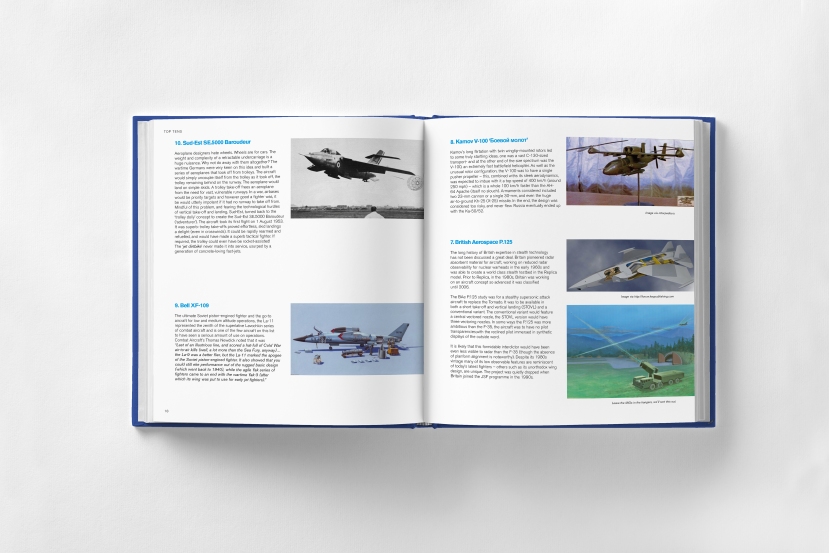

Fairchild AU-23A Armed Pilatus Turbo-Porter 72-3 Janes – Sufficient put into service to not be relevant.
*Pave Coin Beech A36 Bonanza Janes 72-3. Other aircraft included the Piper PE1 Enforcer (turbine Mustang) – Janes 81-2, AU-23 and 24 (above), Cessna O-1, U-17 and O-2 and Cessna A-37.
SAAB-MFI-17 (only 300kg external load capability) 72-3 Janes
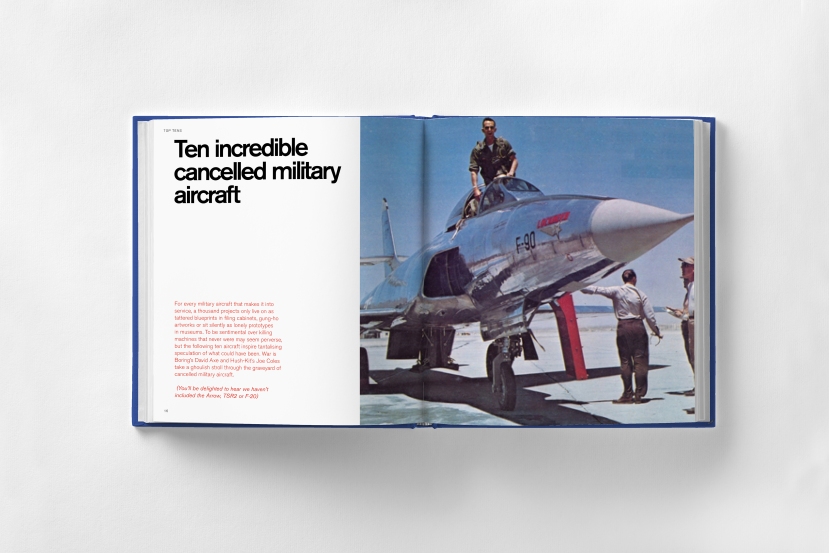
This site needs your help to continue. Our site is absolutely free and we have no advertisements (any you do see, are from WordPress). If you’ve enjoyed an article you can donate here.
Have a look at How to kill a Raptor, An Idiot’s Guide to Chinese Flankers, the 10 worst British military aircraft, The 10 worst French aircraft, Su-35 versus Typhoon, 10 Best fighters of World War II , top WVR and BVR fighters of today, an interview with a Super Hornet pilot and a Pacifist’s Guide to Warplanes. Was the? Want something more bizarre? The Top Ten fictional aircraft is a fascinating read, as is The Strange Story and The Planet Satellite. The Fashion Versus Aircraft Camo is also a real cracker. Those interested in the Cold Way should read A pilot’s guide to flying and fighting in the Lightning. Those feeling less belligerent may enjoy A pilot’s farewell to the Airbus A340. Looking for something more humorous? Have a look at this F-35 satire and ‘Werner Herzog’s Guide to pusher bi-planes or the Ten most boring aircraft. In the mood for something more offensive? Try the NSFW 10 best looking American airplanes, or the same but for Canadians.

But what about the Canadair CL-52?
Take a stock B-47B and stick an Orenda Iroquois engine on the right rear because it’s too big to fit anywhere else.
The lash-up was reportedly terrible to fly, and after only 35 hours of flight tests (and the killing of the Avro Arrow program) it was shipped back to the US and promptly junked.
But what about the Canadair CL-52?
Take a stock B-47B and stick an Orenda Iroquois engine on the right rear because it’s too big to fit anywhere else.
The lash-up was reportedly terrible to fly, and after only 35 hours of flight tests (and the killing of the Avro Arrow program) it was shipped back to the US and promptly junked.
But what about the Canadair CL-52?
Take a stock B-47B and stick an Orenda Iroquois engine on the right rear because it’s too big to fit anywhere else.
The lash-up was reportedly terrible to fly, and after only 35 hours of flight tests (and the killing of the Avro Arrow program) it was shipped back to the US and promptly junked.